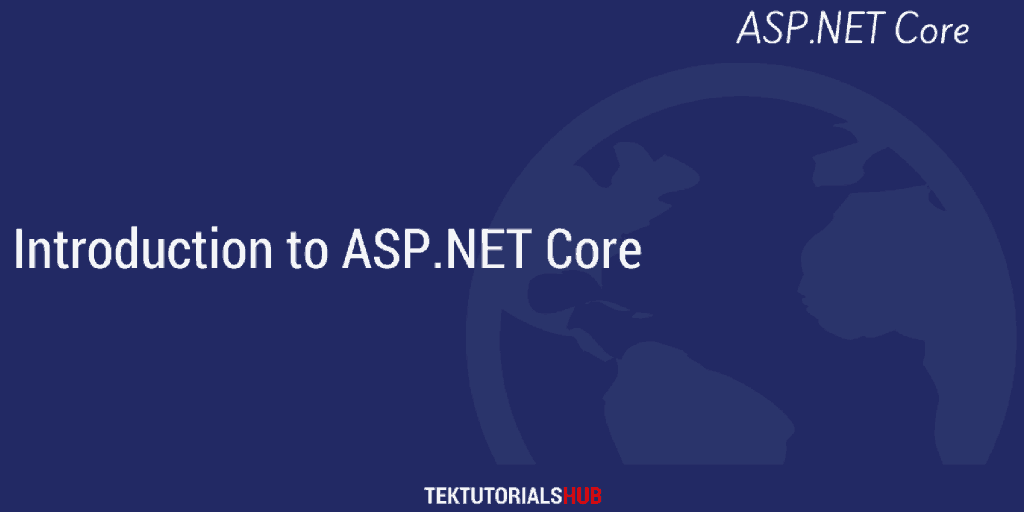In the tutorial, we will learn how to perform client side validation using Javascript. We learnt how to perform server-side model validation in the previous tutorial. The Unobtrusive client side validation in ASP.NET Cores uses the same validation attribution that used by the Model Validator. We will learn all these in this tutorial.
Table of Contents
Client Side Validation
Consider an example, where you need to check if the Name property is not empty. We can easily achieve this by adding Required validation attribute on the model Name property.
1 2 3 4 | [Required] Public string Name {get;set;} |
The Model Validator performs this validation on the server side, which requires a round trip to the server.
This may not be preferable from the point of user experience as there is a time lag before the user gets the error message from the server. It also wastes server resources for a simple validation.
This is a simple use case for client side validation.
The client side validation can be performed in many ways. You can use
- Use Javascript Libraries like JQuery validation and Javascript unobtrusive library
- HTML5 Built-in Validation
- Write your own Javascript
Unobtrusive client-side validation
The ASP.NET core includes unobtrusive client-side validation libraries, which makes it easier to add client side validation code, without writing a single line of code.
In the previous tutorial on server side validation, we looked at how data annotations attributes are used by the Model Validator to validate the Model. The unobtrusive client side validation uses the same attributes to validate the properties on the client side. The difference is that it uses the Javascript instead of C# code.
The unobtrusive validation is done using the jquery.validate.unobtrusive.js library. This library is built over the top of jquery.validate.js library, which in turns uses the jQuery. Hence we need to import all these in our views.
How to use unobtrusive client-side validation
Load the required javascript libraries
First, we need to add the JQuery, jquery.validate & jquery.validate.unobtrusive in our views.
These scripts are added in the layout file (_Layout.cshtml), which defines the layout of our application so that they are available for all the views.
1 2 3 4 5 | <script src="https://ajax.aspnetcdn.com/ajax/jquery/jquery-2.2.0.min.js"></script> <script src="https://ajax.aspnetcdn.com/ajax/jquery.validate/1.16.0/jquery.validate.min.js"></script> <script src="https://ajax.aspnetcdn.com/ajax/jquery.validation.unobtrusive/3.2.6/jquery.validate.unobtrusive.min.js"></script> |
Add Validation Attributes to input properties
Next, we need to add Validation Attributes to the model properties, which we already learnt in the tutorial on Model validation.
The attributes we add when we set up the server side validations, also used by the client side validation.
In the view remember to specify the layout file to use using the following directive
1 2 3 4 5 | @{ Layout = "_Layout"; } |
Example
The model
1 2 3 4 5 | [Required(AllowEmptyStrings = false, ErrorMessage = "Please enter the name")] [StringLength(maximumLength: 25, MinimumLength = 10, ErrorMessage = "Length must be between 10 to 25")] public string Name { get; set; } |
View
1 2 3 4 5 6 7 8 9 10 11 12 13 14 | <form asp-controller="home" asp-action="create" method="post"> <div asp-validation-summary="ModelOnly"> <span>Please correct the following errors</span> </div> <label asp-for="Name"></label> <input asp-for="Name"/> <span asp-validation-for="Name"></span> <br /> <input type="submit" name="submit" /> </form> |
Controller
1 2 3 4 5 6 7 8 9 10 11 12 13 14 | [HttpPost] public IActionResult Create(ProductEditModel model, [FromQuery] string test) { string message = ""; if (ModelState.IsValid){ message = "product " + model.Name + " created successfully"; } else { return View(model); } return Content(message); } |
We have not made any changes in the server side code, except for loading javascript libraries.
Run the application and check it.
How does it work
The input tag helper generates the following HTML.
1 2 3 4 5 6 | <label for="Name">Name</label> <input type="text" data-val="true" data-val-length="Length must be between 10 to 25" data-val-length-max="25" data-val-length-min="10" data-val-required="Please enter the name" id="Name" name="Name" value="" /> <span class="field-validation-valid" data-valmsg-for="Name" data-valmsg-replace="true"></span> <br /> |
You could see that it has added the several attributes starting with data-*.
The data-* attributes are part of the HTML5, which allow us the add extra information (metadata) to the HTML element.
The Javascript unobtrusive library reads the data-val attributes and performs the client side validation in the browser when the user submits the form. These Validations are done before the form is sent over an HTTP. If there is a validation error, then the request will not be sent.
Click on F12 to open the Chrome developer console and go to Network tab. You can see it verify that the no HTTP Request is sent when you click on Submit button with an invalid input.
Summary
In this tutorial, we looked at how to use Javascript unobtrusive library to take advantage of validation attribute to perform client side validation.



Premium content!
Thank you
Thanks for educating you